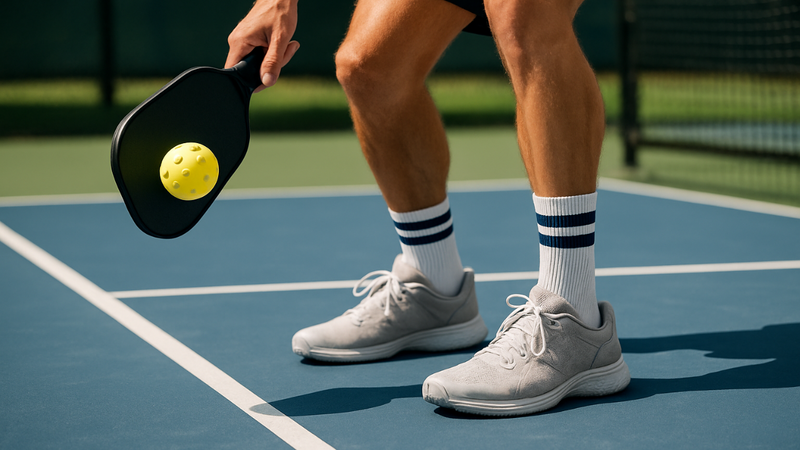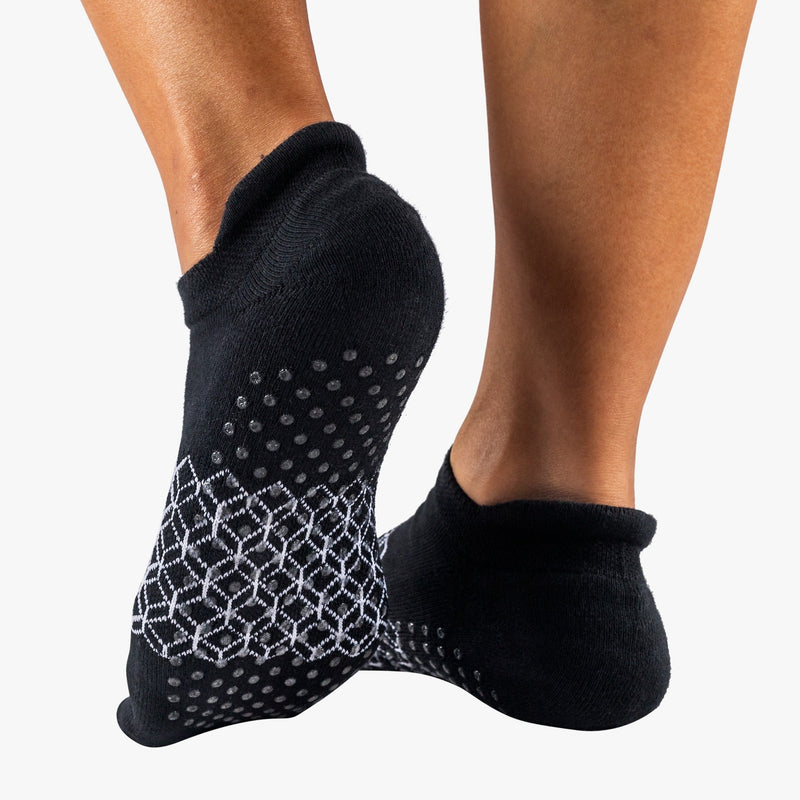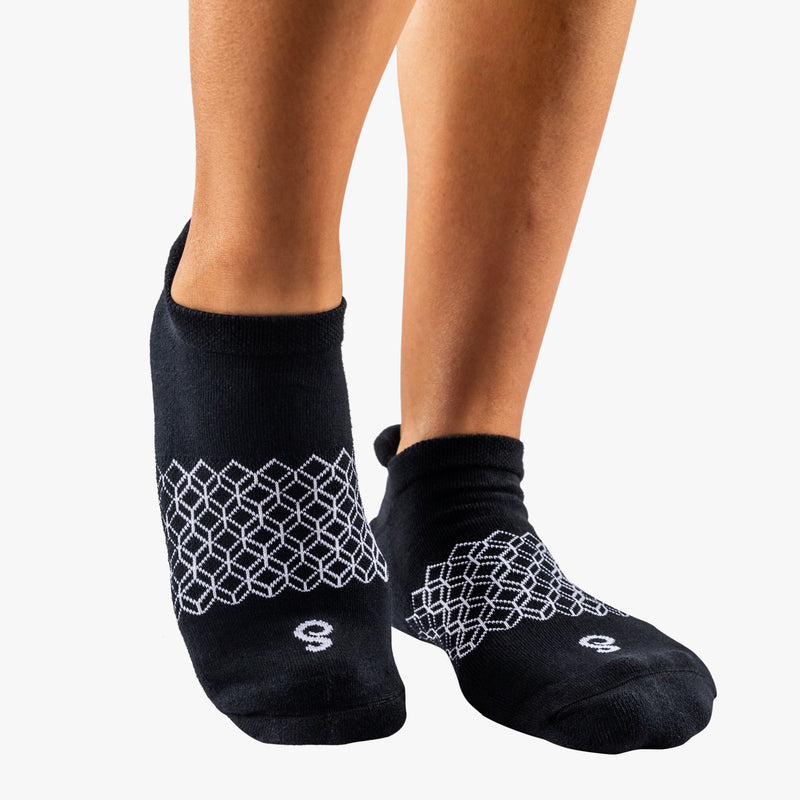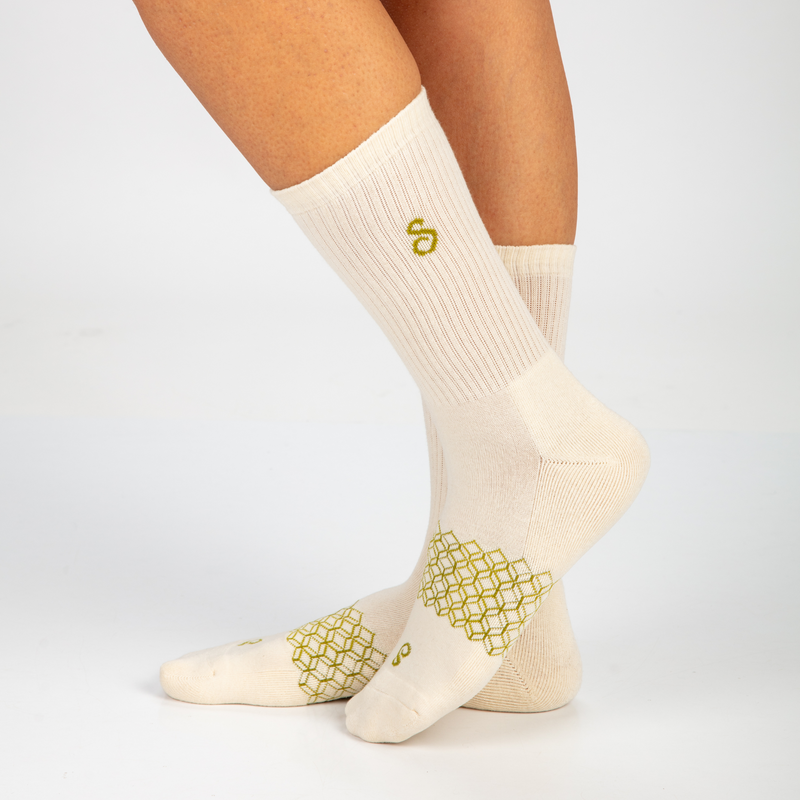
Choosing the right socks can make a noticeable difference for anyone playing pickleball, whether they play casually or every week. The best socks for pickleball provide comfort, support, and moisture-wicking to keep feet dry and help prevent blisters during long matches. With the correct pair, players are less likely to experience distractions or discomfort, allowing them to focus on their performance.
Many athletes overlook the importance of socks, but pickleball’s quick and unpredictable movements mean feet are under constant stress. Material, fit, and cushioning all play a crucial role in keeping feet healthy and feeling fresh after each game. Here’s what to look for when selecting socks specifically designed for the demands of pickleball.
Key Features of the Best Socks for Pickleball
Socks greatly influence player comfort, stability, and performance during pickleball. The fit, fabric, and construction play specific roles in supporting foot health and performance.
Breathability and Moisture-Wicking Fabric
Pickleball involves frequent lateral moves and quick sprints, which generate heat and sweat. Socks designed with breathable fabrics keep feet cooler during extended matches.
Moisture-wicking materials such as polyester blends or merino wool help pull sweat away from the skin. This reduces the risk of blisters and fungal infections by keeping feet dry.
Look for mesh panels incorporated into high-friction areas. These zones allow better airflow and temperature regulation. Avoid cotton as it absorbs moisture and dries slowly, which can lead to discomfort.
Common Moisture-Wicking Fabrics:
| Material | Properties |
|---|---|
| Polyester Blends | Light, dries quickly |
| Merino Wool | Breathable, regulates temperature |
| Nylon | Strong, dries faster than cotton |
Cushioning and Impact Protection
Proper cushioning absorbs impact from constant running and pivoting. The best pickleball socks include extra padding at the heel and ball of the foot where stress is highest.
Thin socks often lack this protection. In contrast, those with targeted cushioned zones help reduce fatigue and the risk of foot pain.
A balance between padding and bulk is important. Overly thick socks may feel uncomfortable in snug shoes. Many find medium-thickness ideal for court sports like pickleball.
Consider socks with reinforced toes and heels for greater durability. These features maintain support, even after many washes.
Arch Support and Compression
Arch support in socks provides added stability and helps limit muscle fatigue. It also supports the natural structure of the foot during quick changes of direction.
Compression features, often seen as ribbed bands or targeted panels, increase blood circulation. This may help reduce swelling, especially during longer play sessions.
Those with flat feet or high arches benefit most from shaped socks that contour to foot anatomy. Compression socks in particular offer a snug fit that aids recovery and may lessen soreness after play.
Look for socks that list compression rating or highlight anatomical support zones in the product description.
Fit and Comfort
A secure, accurate fit prevents the sock from slipping or bunching in the shoe. Ill-fitting socks can lead to blisters or distracting discomfort during play.
Seamless toe construction reduces irritation. Flat or hidden seams are best for players prone to friction issues along the toes.
Many pickleball players prefer socks with a Y-shaped heel or ergonomic design for a contoured, non-slip fit. Cuffs should be snug enough to stay in place but not so tight as to cut off circulation.
Fit Tips:
- Choose a size that corresponds closely to shoe size.
- Try on socks with your court shoes before play.
- Wash and dry before first use for optimal fit.
Material Choices for Pickleball Socks
Choosing the right material for pickleball socks impacts comfort, moisture control, and durability. Different fabrics offer key benefits, including breathability, rapid drying, or better cushioning. Each material suits a specific need or playing environment.
Synthetic Fibres
Synthetic fibres such as polyester, nylon, and acrylic are popular in sports socks. They wick moisture away from the skin more efficiently than most natural fibres, which helps keep feet dry and reduces the risk of blisters. Synthetic options also dry quickly, making them ideal for long matches or play in humid conditions.
These materials tend to be lightweight yet durable. Reinforced zones using nylon or polyester increase the lifespan of the sock, even with repeated wear and washing. Acrylic is especially valued for its softness and cushioning, often used in toe and heel areas for better protection.
However, synthetic fibres can sometimes trap odour if not treated with antibacterial finishes. When choosing synthetic socks, look for features like ventilated panels, stretch fit, and seamless toes for additional comfort.
Key Features Table
| Fibre | Moisture Wicking | Durability | Drying Speed | Odour Resistance |
|---|---|---|---|---|
| Polyester | Excellent | High | Fast | Moderate |
| Nylon | Good | Very High | Fast | Moderate |
| Acrylic | Good | Medium | Moderate | Moderate |
Natural Materials
Cotton and merino wool are the primary natural materials used in pickleball socks. Cotton is widely available and feels soft against the skin, but it absorbs moisture rather than wicking it away. This means cotton socks can become heavy and damp during intense play, which may cause discomfort or blisters.
Merino wool, on the other hand, offers superior breathability and insulation. It regulates temperature effectively and manages moisture better than cotton. This makes merino wool a suitable choice for both warm and cool conditions.
Natural fibres are favoured by those with sensitive skin or who prefer a less synthetic feel. However, pure wool socks may need special care in laundering and can wear out faster at stress points. Look for reinforced toes and heels in natural fibre socks to improve durability.
Hybrid Blends
Hybrid blends combine synthetic and natural fibres to get the advantages of both. Common combinations include polyester-cotton and wool-nylon blends. These blends offer improved moisture management, cushioning, and lifespan compared to single-fibre socks.
A cotton-polyester blend provides a balance of breathability and drying speed. Wool-nylon blends enhance the strength and resilience of merino wool, so the sock lasts longer and fits better. Blends often incorporate elastic or spandex for shape retention and better arch support.
Manufacturers design blends to address specific athlete needs, including reduced friction, better stretch, and quicker drying. When choosing blended socks, pay attention to fibre percentages. A higher proportion of technical fibres typically leads to better performance for intense play and sweaty conditions.
Best Sock Lengths for Pickleball Play
Sock length influences comfort, protection, and style when playing pickleball. Players may prefer different lengths depending on fit, weather, and vulnerability to chafing or blisters.
Ankle Socks
Ankle socks reach just above the shoe collar, covering the ankle bone. This length offers a balance between protection and breathability, making it a practical option for most players.
Players appreciate ankle socks for their ability to shield the ankle area from friction without feeling bulky. The added coverage, compared to no-show socks, helps prevent blisters where shoes and skin meet.
Many sport-specific ankle socks feature reinforced heels and toes. Moisture-wicking fabrics like polyester blends keep feet dry during intense rallies. For players prone to mild abrasions or irritation along the upper shoe line, ankle socks are often the preferred choice.
Key Features:
- Light ankle protection
- Variety of cushion levels
- Suitable for most weather conditions
Crew Socks
Crew socks extend several inches above the ankle, often reaching mid-calf. This extra length provides more coverage against brushes, scrapes, and sun exposure.
For players on outdoor courts, crew socks can help protect against dirt, debris, and insect bites. They are ideal for those who experience blisters around the lower leg or prefer increased warmth during cooler sessions.
Padded crew socks often include arch support and thicker weaves in high-impact zones. However, some players may find them warmer or less breathable in hot weather. Breathable mesh panels and snug ribbing can help address these concerns.
Key Benefits:
- Improved leg coverage
- Protection from abrasions and sun
- Options with added padding or support
No-Show Socks
No-show socks sit below the shoe collar, becoming nearly invisible when worn with trainers. They are chosen by players who want minimal sock visibility and maximum ventilation.
This style is best for indoor or hot weather play. However, the very low cut can sometimes increase the risk of heel slippage or shoe contact with bare skin, leading to blisters for some players.
Modern no-show sports socks often add silicone heel grips or elastic bands to prevent slipping. Materials like nylon blends prioritise breathability and quick drying. The no-show design keeps feet cooler but may not offer protection where shoe edges meet the foot.
Suitability:
- Best for indoor or summer play
- Minimal coverage, highest ventilation
- Avoid if prone to heel rubbing or blisters
Durability and Longevity
High-quality pickleball socks stand out for their ability to maintain shape, elasticity, and comfort even after repeated use. Material blends, construction techniques, and targeted reinforcements all play key roles in extending sock life during regular play.
Resistance to Wear and Tear
Pickleball socks must endure frequent lateral movements, sudden stops, and abrasive court surfaces. Materials like polyester, nylon, and blended fibres are favoured for their ability to withstand friction and repeated washing. These fabrics retain their integrity more effectively than pure cotton, which tends to deteriorate faster under stress.
Moisture-wicking properties help prevent the fibres from breaking down, especially in high-sweat environments. Socks for pickleball often incorporate specific weaves or denser stitching in stress areas to fight premature thinning. Players should check for double-knit zones in the forefoot and arch as key indicators of enhanced longevity.
Key features contributing to resistance:
| Feature | Benefit |
|---|---|
| Dense Weave | Reduces holes, thinning |
| Blended Fibres | Improves fabric life |
| Moisture Management | Prevents fibre breakdown |
Reinforced Heel and Toe
The heel and toe areas sustain most of the impact during starts and stops in pickleball. Brands respond by adding extra padding or using higher-tensile fibres in these zones, decreasing the likelihood of holes and blowouts.
A reinforced heel cushions the Achilles and protects the back of the foot from standard shoe friction. Reinforced toes offer additional shielding against nail rubbing and toe drag, especially during quick pivots or slides. Padding density varies, but quality socks prioritise protection without excess bulk.
Look for stitched overlays or visibly thickened fabric in the heel and toe as signs of reinforcement. Such construction ensures socks last longer and provide continuous support in every match.
Top Brands and Models
Certain brands are well known for producing quality socks suitable for pickleball. These companies focus on comfort, durability, and moisture control.
Balega is popular for its Hidden Comfort socks. They feature a reinforced heel and toe, seamless toe design, and moisture-wicking fabric.
Thorlo offers specialised sports socks like the Experia line. These have light padding and mesh panels, helping players stay cool and supported during matches.
Feetures produces socks with targeted compression and blister prevention. Their Elite Max Cushion model is favoured for comfort in high-impact games.
The following table outlines key features of top models:
| Brand | Model | Main Features |
|---|---|---|
| Balega | Hidden Comfort | Plush cushioning, seamless toe, moisture-wicking |
| Thorlo | Experia | Light padding, ventilated mesh |
| Feetures | Elite Max Cushion | Targeted compression, anti-blister design |
Other reliable options include Swiftwick’s Aspire socks and ASICS Cushion Low Cut. Both provide arch support and breathable materials.
Players often prefer synthetic fibres, as found in the brands mentioned above, because they help manage sweat and reduce friction during play.
Design Considerations
Sock design directly impacts comfort, performance, and safety for pickleball players. Features like stitching methods and grip technology can make a noticeable difference on the court.
Seamless Construction
A seamless design minimises friction, reducing the likelihood of blisters and skin irritation. Unlike traditional socks with bulky seams around the toes, seamless constructions use advanced knitting techniques to create a smooth finish without raised edges.
This is especially important in pickleball, where quick movements put pressure on sensitive areas of the foot. Seamless technology helps maintain foot comfort during long matches and repetitive play. Those prone to blisters or discomfort benefit the most from this feature.
Seamless socks also generally offer a better fit. Since there are fewer constraints from bulky seams, the material can stretch and conform to the unique shape of each player’s foot. For optimal comfort, look for descriptions like “hand-linked” or “flat seam” on the packaging.
Anti-Slip Features
Anti-slip elements within the sock help prevent internal sliding and bunching. Many performance socks include rubberised or silicone grips on the sole. These grips enhance stability, especially during lateral movement and sudden stops typical in pickleball.
Some designs employ textured yarns or denser weave patterns to improve in-shoe grip. While these features add minor bulk, they help keep the sock securely in place without causing discomfort.
Additionally, reinforced heels and arch bands can contribute to anti-slip performance. These elements prevent socks from rolling down inside trainers or bunching, preserving focus on play rather than gear adjustments. Check for terms like “grip sole” or “non-slip technology” for socks that specifically address this need.
Sock Care and Maintenance
Proper care extends the life and function of pickleball socks. Attention to washing methods and fabric preservation keeps socks comfortable and effective.
Washing Guidelines
Machine washing on a gentle cycle at 30°C (cold water) helps to prevent shrinkage and fabric breakdown. Always turn socks inside out before washing—this reduces pilling on the outer surface and gets rid of dirt more efficiently.
It is best to use a mild, bleach-free detergent. Avoid fabric softeners as they can leave residues that reduce breathability. When possible, group socks by fabric type to avoid friction damage.
Drying tips:
- Air drying is recommended. Hang socks flat or over a line to retain shape.
- If using a dryer, select a low heat setting to avoid weakening elastic fibres.
Pay special attention to socks with built-in padding or mesh zones, as rough handling may compromise these features.
Preserving Material Integrity
Most performance socks combine materials like polyester, nylon, and elastane for moisture management and fit. Excessive heat from ironing or hot water degrades elasticity and strength.
To prevent stretching, avoid wringing out wet socks. Gently squeeze out excess water instead. Fold socks together rather than balling them up, as excessive stretching can cause the cuff to warp.
Periodic checks for thinning areas, especially in the heel and toe, can alert wearers to replace socks before blisters or chafing occur. Proper storage in a ventilated drawer or bag keeps socks dry, stopping bacteria and odours from developing.
For socks with anti-microbial properties, frequent washing is still necessary to keep fibres functional. Following manufacturer care labels is always recommended for specialty fabrics.
Choosing the Right Socks for Your Needs
Selecting the best socks for pickleball starts with material. Many players prefer moisture-wicking fabrics like polyester, nylon, or blends with merino wool. These help reduce sweat and improve comfort during play.
Cushioning is another important factor. Some socks offer extra padding in the heel and toe areas. This padding absorbs impact and helps prevent blisters when moving quickly on court.
A good fit is key. Socks that are too loose can bunch up and cause discomfort. Those that are too tight may restrict circulation. Players should consider mid-crew or crew lengths to protect ankles from rubbing against shoes.
Key features to look for:
- Breathable mesh zones for airflow
- Arch support to minimise fatigue
- Reinforced heels and toes
| Feature | Benefit |
|---|---|
| Moisture control | Reduces sweat and odour |
| Arch support | Helps prevent soreness |
| Cushioned zones | Adds comfort and support |
Choosing socks with flat or seamless toes reduces risk of irritation. Players with sensitive skin might prefer softer or hypoallergenic fibres.
In warmer weather, lightweight and ventilated socks are recommended. For colder conditions, thicker socks with insulating properties can help maintain warmth.
Frequently Asked Questions
Sock choice can significantly affect comfort, support, and foot health during prolonged pickleball play. Considerations include material, fit, grip features, and levels of cushioning, as well as benefits specific to outdoor or competitive environments.
What characteristics define high-quality socks for prolonged pickleball play?
High-quality pickleball socks often use moisture-wicking fabrics like merino wool or synthetic blends. Reinforced heel and toe areas increase durability and comfort. Flat seams, arch support and a snug, anatomical fit help prevent blisters during long sessions.
Are there specific benefits to wearing compression socks during pickleball matches?
Compression socks can improve blood circulation and reduce fatigue, especially in the lower legs. Some players report less muscle soreness and swelling after matches. Graduated compression may also support quicker recovery between games.
Can certain socks enhance grip and stability in pickleball shoes?
Grip socks with silicone or rubberised dots on the sole can help reduce in-shoe slippage. A secure fit and material that hugs the foot also maintains stability during lateral movements. This support is useful for fast-paced play and sudden direction changes.
What types of socks do pickleball professionals recommend for competitive play?
Many professionals prefer medium-cushioned, crew-length socks from brands like Thorlo, Balega, and Asics. These socks often feature arch compression and ventilation panels. Materials that combine breathability and durability are key for tournament-level performance.
Which socks offer the best moisture management for outdoor pickleball sessions?
Synthetic fibres such as polyester and nylon typically provide the best moisture control outdoors. Some brands include mesh zones for greater breathability in hot weather. Avoid socks with high cotton content, as they retain moisture and increase the risk of blisters.
How do I choose between cushioned and lightweight socks for regular pickleball activity?
Cushioned socks are suitable for players who prefer extra padding or have sensitive feet. Lightweight socks offer better breathability and a closer fit for those seeking more agility. The choice depends on foot type, shoe fit, and individual comfort preferences.














